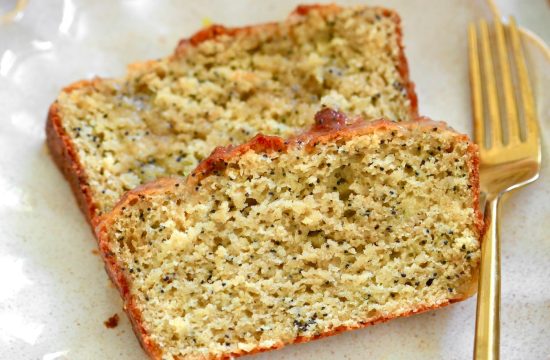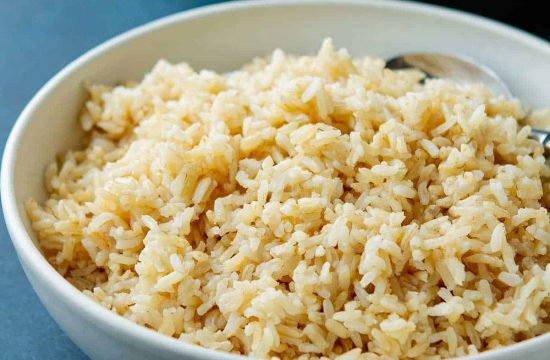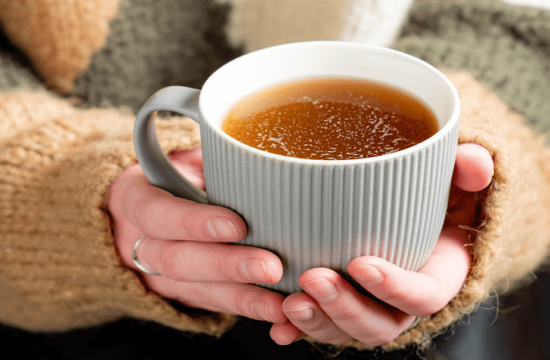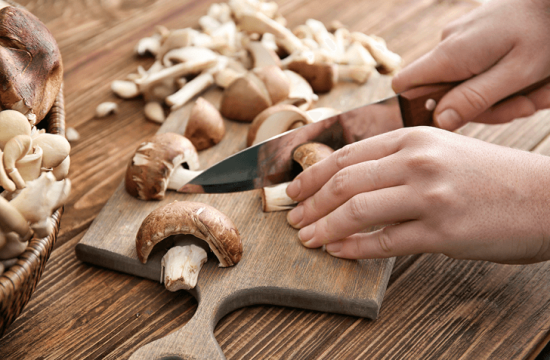This article explains Sushruta Samhita Sutrasthana Chapter 35 “Aturopakramaniya Adhyaya” – Examination of the patient.
Aturopakramaniya Adhyaya
Examination of the patient
अथात आतुरोपक्रमणीयमध्यायं व्याख्यास्यामः ||१||
यथोवाच भगवान् धन्वन्तरिः ||२||
We will now expound the chapter by name Aturopakramaniya _ attempting treatment of the patient (examination of the patient) – as revealed by the venerable Dhanvantari.
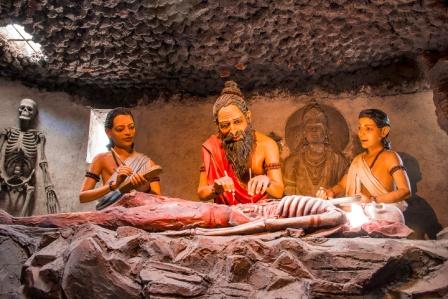

Examination of Ayus, lifespan is the priority
आतुरमुपक्रममाणेन भिषजाऽऽयुरादावेव परीक्षितव्यं; सत्यायुषि व्याध्यृत्वग्निवयोदेहबलसत्त्वसात्म्यप्रकृतिभेषजदेशान् परीक्षेत ||३||
Before commencing the treatment of the patient, the physician should first examine his Ayus i.e., lifespan.
Because only if the life span of the patient is remaining (patient has longevity) the other factors like Vyadhi (disease), Rtu (season), Agni (digestive power), Vayah (age), Deha (body built), Bala (strength) Satva (mind) Satmya (habituations accustoms), Prakrti (constitution), Bhesaja (drug) and Desa (habitat) should be examined.
Read – Ayu – Meaning, Explanation, Types Of Lifespan
Ayus Pariksha – Examination of lifespan
तत्र महापाणिपादपार्श्वपृष्ठस्तनाग्रदशनवदनस्कन्धललाटं
दीर्घाङ्गुलिपर्वोच्छ्वासप्रेक्षणबाहुं, विस्तीर्णभ्रूस्तनान्तरोरस्कं ह्रस्वजङ्घामेढ्रग्रीवं, गम्भीरसत्त्वस्वरनाभिम्, अनुच्चैर्बद्धस्तनम्, उपचितमहारोमशकर्णं, पश्चान्मस्तिष्कं, स्नातानुलिप्तं मूर्धानुपूर्व्या
विशुष्यमाणशरीरं पश्चाच्च विशुष्यमाणहृदयं पुरुषं जानीयाद्दीर्घायुः खल्वयमिति |
तमेकान्तेनोपक्रमेत् |
एभिर्लक्षणैर्विपरीतैरल्पायुः; मिश्रैर्मध्यमायुरिति ||४||
Signs of Dirghayu (long span of life) – The person who has long lifespan will present with the below mentioned features
- his hands, feet, flanks, tip of the breasts, teeth, face, shoulders and forehead are big in size
- his fingers and the joints of the fingers, expirations, eyes and arms are long;
- his brows, space in between the breasts and chest are broad;
- his calves, penis and neck are short;
- his mind, voice and umbilicus are deep;
- his breasts are not greatly elevated but are firm;
- his ears and back of the head (posterior part) are well grown (muscular), big and hairy;
- whose body first starts drying from the head after having taken head bath and anointing and the region of the heart dries later,
Such a person should be treated with all efforts.
Signs of Alpayu (less or short span of life) – The person who has less life span will present with the features opposite to those explained above (in the context of deerghayu).
Signs of Madhyamayu (medium span of life) – The person who has medium life span will present with the mixed features (as those of deergha and alpayu).
Read – Relationship of Water Element With Doshas And Lifespan
Signs of long lifespan
भवन्ति चात्र |
गूढसन्धिसिरास्नायुः संहताङ्गः स्थिरेन्द्रियः |
उत्तरोत्तरसुक्षेत्रो यः स दीर्घायुरुच्यते ||५||
गर्भात् प्रभृत्यरोगो यः शनैः समुपचीयते |
शरीरज्ञानविज्ञानैः स दीर्घायुः समासतः ||६||
The person is said to have a long span of life if he has
- deep located (concealed) bony joints, veins and ligaments,
- compact (well developed) body,
- steady sense organs,
- each succeeding division of the body (commencing from the feet to the head) better than its preceding
Madhyamayu– Person of Moderate lifespan
मध्यमस्यायुषो ज्ञानमत ऊर्ध्वं निबोध मे |
अधस्तादक्षयोर्यस्य लेखाः स्युर्व्यक्तमायताः ||७||
द्वे वा तिस्रोऽधिका वाऽपि पादौ कर्णौ च मांसलौ |
नासाग्रमूर्ध्वं च भवेदूर्ध्वं लेखाश्च पृष्ठतः ||८||
यस्य स्युस्तस्य परममायुर्भवति सप्ततिः |९|
Now I will describe the features of a person having a medium life span.
The maximum age (lifespan) of a person is said to be seventy years (and this is considered to be moderate lifespan) if he –
Alpayu- Person of short lifespan
जघन्यस्यायुषो ज्ञानमत ऊर्ध्वं निबोध मे ||९||
हस्वानि यस्य पर्वाणि सुमहच्चापि मेहनम् |
तथोरस्यवलीढानि न च स्यात्पृष्ठमायतम् ||१०||
ऊर्ध्वं च श्रवणौ स्थानान्नासा चोच्चा शरीरिणः |
हसतो जल्पतो वाऽपि दन्तमांसं प्रदृश्यते |
प्रेक्षते यश्च विभ्रान्तं स जीवेत्पञ्चविंशतिम् ||११||
Next, I am going to describe the features of persons having short lifespan.
The maximum age (lifespan) of a person is said to be twenty-five years only (and this is considered to be minimum / short lifespan) if he –
- has short bony joints (of the fingers),
- has big penis,
- has chest having hairs appearing in circles (whirls),
- has back which is not broad,
- has ears and nose located slightly up (than their usual place)
- exhibits his gums during laughing or talking and
- has sight which is unsteady
Sharira Pramana- Measurements of body
अथ पुनरायुषो विज्ञानार्थमङ्गप्रत्यङ्गप्रमाणसारानुपदेक्ष्यामः |
तत्राङ्गान्यन्तराधिसक्थिबाहुशिरांसि, तदवयवाः प्रत्यङ्गानीति |
तत्र, स्वैरङ्गुलैः पादाङ्गुष्ठप्रदेशिन्यौ द्व्यङ्गुलायते;
प्रदेशिन्यास्तु मध्यमानामिकाकनिष्ठिका यथोत्तरं पञ्चमभागहीनाः; चतुरङ्गुलायते पञ्चाङ्गुलविस्तृते प्रपदपादतले;
पञ्चचतुरङ्गुलायतविस्तृता पार्ष्णिः; चतुर्दशाङ्गुलायतः पादः; चतुर्दशाङ्गुलपरिणाहानि पादगुल्फजङ्घाजानुमध्यानि;
अष्टादशाङ्गुला जङ्घा, जानूपरिष्टाच्च द्वात्रिंशदङ्गुलम्, एते पञ्चाशत्; जङ्घायामसमावूरू;
द्व्यङ्गुलानि वृषणचिबुकदशननासापुटभागकर्णमूलभ्रूनयनान्तराणि;
चतुरङ्गुलानि मेहनवदनान्तरनासाकर्णललाटग्रीवोच्छ्रायदृष्ट्यन्तराणि; द्वादशाङ्गुलानि भगविस्तारमेहननाभिहृदयग्रीवास्तनान्तरमुखायाममणिबन्धप्रकोष्ठस्थौल्यानि; इन्द्रबस्तिपरिणाहांसपीठकूर्परान्तरायामः षोडशाङ्गुलः;
चतुर्विंशत्यङ्गुलो हस्तः; द्वात्रिंशदङ्गुलपरिमाणौ भुजौ; द्वात्रिंशत्परिणाहावूरू; मणिबन्धकूर्परान्तरं षोडशाङ्गुलं; तलं षट्चतुरङ्गुलायामविस्तारम्; अङ्गुष्ठमूलप्रदेशिनीश्रवणापाङ्गान्तरमध्यमाङ्गुल्यौ पञ्चाङ्गुले; अर्धपञ्चाङ्गुले प्रदेशिन्यनामिके; सार्धत्र्यङ्गुलौ कनिष्ठाङ्गुष्ठौ; चतुर्विंशतिविस्तारपरिणाहं मुखग्रीवं; त्रिभागाङ्गुलविस्तारा नासापुटमर्यादा; नयनत्रिभागपरिणाहा तारका; नवमस्तारकांशो दृष्टिः; केशान्तमस्तकान्तरमेकादशाङ्गुलं; मस्तकादवटुकेशान्तो दशाङ्गुलः; कर्णावट्वन्तरं चतुर्दशाङ्गुलं; पुरुषोरःप्रमाणविस्तीर्णा स्त्रीश्रोणिः; अष्टादशाङ्गुलविस्तारमुरः; तत्प्रमाणा पुरुषस्य कटी; सविंशमङ्गुलशतं पुरुषायाम इति ||१२||
Next, in order to understand knowledge of life, we will describe pramana (measurements) of the body and its parts and Sara (excellence of the tissues).
Antaradhi (trunk), Sakthi (legs), Bahu (arms) and Siras (head including the neck) these six are the Anga (major parts). The organs or parts in each of these are the Pratyanga (minor parts).
In terms of one’s own Angula (breadth of a finger – 1.8 cm. approximately) –
- the big toe and second toe are two angula (3.6 cm) each in length;
- the third, fourth and fifth toes are less by one-fifth angula each in their succeeding order;
- the forefoot and sole each are of four angula (7.8 cm) in length and five angula (9.0 cm) in breadth;
- the heel / ankle is five angula (9 cm) in length and four angula (7.8cm) in breadth;
- the foot is fourteen angula (25.2 cm) in length;
- the middle part of the foot, heel, calf, and knee are fourteen angula (25.2 cm) in circumferences;
- calf is eighteen angula (32.6 cm) in length
- above the knee (thigh) it is thirty-two angula (65.2cm) in length;
- these together (calf, knee and the region above the knee) are fifty Angula (90cm) in length,
- the thigh is equal to the calf in length (32.cm);
Dimensions of other structures of the body –
- testes (scrotum), chin, teeth, area of the nostrils (alae nasi), root (base) of the ear, eyebrow and space between two eyes (eyebrows) are two angula (3.6 cm) in length,
- penis, cavity of the mouth, nose, ears, forehead, height of the neck, and space between pupils is four angula (7.8 cms) each,
- width of the vagina (vulva) and spaces between the penis and umbilicus, between umbilicus and heart, heart and root of the neck, between the two breasts, length (height of the face from chin to the upper part of the forehead), and circumference (thickness) of the wrist joint and forearm – each is of twelve angula (21.6cm)
- circumference at Indrabasti marma (vital spot situated at the centre of the calf muscles) and the distance between shoulders and elbow joints, is sixteen angula (26.8cm)
- length of hand (forearm) – distance between elbow and tip of the middle finger is twenty-four angula (45.6 cm) in length
- the length of two shoulders is thirty-two angula (57.6 cm)
- the circumference of each thigh is thirty-two angula (57.6cm)
- the space between the wrist and elbow is sixteen angula (26.8cm)
- the palm of the hand is six angula (10.8 cm) in length and four angula (7.2 cm) in breadth;
- distance between root of thumb and index finger, space between the orifice of the ear and the outer canthus (end of the eye) and the length of the middle finger each is five angula (9.0cm)
- the length of the index and ring fingers is five and half angula (5.4 cm);
- the length of the little and index fingers is three and half angula
- breadth of the face and circumference of the neck is twenty-four angula (43.2cm);
- the area (width) of the nose (alaenasi) is one and one third angula (2 cm)
- taraka ( cornea) is one third of the eye,
- drusti (pupil) is one ninth part of the taraka (cornea);
- the distance between the line of hair (in the region of the temples) and the top of the head (centre point on the line of hair (in the region of the temples) is eleven angulas
- the distance between the top of the head (centre point on the top of the head – bregma) above the avatu (cricoids cartilage in the neck) is ten angula (1.8 cm);
- distance between the two ears from their back is fourteen angula (25.2cm),
- pelvis of women is of the same length and width as the chest of man (twelve angula – 21.6 cm);
- the breadth of chest of the woman is eighteen angula (32.4cm),
- the breadth of the waist of a man is of the same measurement (32 cm);
- the length of the body of man is one hundred twenty angula (216 cm)
Notes:- Dalhana states that length (height) of man is to be taken when he is standing on his toes raising his arms upwards.
Read – Pramana Pariksha Examination Of Measurements Of Body Parts
भवन्ति चात्र श्लोकाः |
पञ्चविंशे ततो वर्षे पुमान् नारी तु षोडशे |
समत्वागतवीर्यौ तौ जानीयात् कुशलो भिषक् ||१३||
देहः स्वैरङ्गुलैरेष यथावदनुकीर्तितः |१४|
युक्तः प्रमाणेनानेन पुमान् वा यदि वाऽङ्गना ||१४||
दीर्घमायुरवाप्नोति वित्तं च महदृच्छति |
मध्यमं मध्यमैरायुर्वित्तं हीनैस्तथाऽवरम् ||१५||
The intelligent physician should understand that a man at the age of twenty-five years and woman at her age of sixteen years are to be known as having attained full growth and vitality.
The measurements of the body have been indicated in one’s own angula (fingers breadth) only. Man or woman having these measurements, will attain long life and plenty of wealth. With moderate and poor measurements, they attain medium and short lives (lifespan) respectively.
Sara – excellence of mind and tissue
अथ सारान् वक्ष्यामः- स्मृतिभक्तिप्रज्ञाशौचशौर्योपेतं कल्याणाभिनिवेशं सत्त्वसारं विद्यात्; स्निग्धसंहतश्वेतास्थिदन्तनखं बहुलकामप्रजं शुक्रेण; अकृशमुत्तमबलं स्निग्धगम्भीरस्वरं सौभाग्योपपन्नं महानेत्रं च मज्ज्ञा; महाशिरःस्कन्धं दृढदन्तहन्वस्थिनखमस्थिभिः; स्निग्धमूत्रस्वेदस्वरं बृहच्छरीरमायासासहिष्णुं मेदसा; अच्छिद्रगात्रं गूढास्थिसन्धिं मांसोपचितं च मांसेन; स्निग्धताम्रनखनयनतालुजिह्वौष्ठपाणिपादतलं रक्तेन; सुप्रसन्नमृदुत्वग्रोमाणं त्वक्सारं विद्यादिति |
एषां पूर्वं पूर्वं प्रधानमायुःसौभाग्ययोरिति ||१६||
विशेषतोऽङ्गप्रत्यङ्गप्रमाणादथ सारतः |
परीक्ष्यायुः सुनिपुणो भिषक् सिध्यति कर्मसु ||१७||
Next, we will describe the different Sara – excellent qualities of tissues.
- Satvasara (person with excellence of mind) – The person who is endowed with good memory, devotion, intelligence, cleanings, valour, bravery, benevolent thoughts and actions – should be understood as Satvasara – a person of excellence of mind.
- Sukrasara (person with excellence of semen) – He who has smooth, well grown and white coloured bones, teeth and nails; more of sexual desire and offspring – should be understood as Sukrasara – person of excellence of semen.
- Majjasara (person with excellence of bone marrow) – He, who is not emaciated, who has good strength, pleasant and deep (loud) voice, and lustrous, wide eyes, should be taken as Majja sara- a person of excellence of bone marrow.
- Asthisara (person with excellence of bone) – He, who has big head and shoulders; firm teeth, lower jaw, bones and nails should be considered as Asthi sara person of excellence of bone.
- Medasara (person with excellence of fat) – He, whose urine and sweat are unctuous, voice is pleasant, has a big body and is unable to tolerate excretion – is to be understood as Medas sara- a person of excellence of fat.
- Mamsasara (person with excellence of muscles) – He, who has a well grown body, bone and bony- joints concealed and well-developed muscles should be considered as of Mamsa sara- person of excellence of muscles.
- Raktasara (person with excellence of blood) – He, who has unctuous and coppery red coloured nails, eyes, palate, tongue, lips, palms and soles is to be considered as Raktasara – person of excellence of blood.
- Tvaksara (person with excellence of skin or plasma) – He, whose skin and hairs are good looking and soft – is to be understood as Tvak Sara(or rasa Sara) – person of excellence in Rasadhatu (plasma).
- Out of these, the earlier ones in preceding order are important for determining lifespan and prosperity.
- The intelligent physician who examines the measurements of major and minor parts of the body and excels especially, becomes successful in his activities.
Read – Sara Pariksha Examination Of Essence And Strength Of Tissues And Mind
Vyadhi pariksha- Examination of diseases
व्याधिविशेषास्तु प्रागभिहिताः; सर्व एवैते त्रिविधाः- साध्या, याप्याः, प्रत्याख्येयाश्च |
तत्रैतान् भूयस्त्रिधा परीक्षेत- किमयमौपसर्गिकः,
प्राक्केवलः, अन्यलक्षण इति |
तत्र, औपसर्गिको नाम यः पूर्वोत्पन्नं व्याधिं जघन्यकालजातो व्याधिरुपसृजति, स तन्मूल एवोपद्रवसञ्ज्ञः;
प्राक्केवलो नाम यः प्रागेवोत्पन्नो व्याधिरपूर्वरूपोऽनुपद्रवश्च; अन्यलक्षणो नाम यो भविष्यद्व्याधिख्यापकः, स पूर्वरूपसञ्ज्ञः |
तत्र, सोपद्रवमन्योन्याविरोधेनोपक्रमेत, बलवन्तमुपद्रवं वा;
प्राक्केवलं यथास्वं प्रतिकुर्वीत; अन्यलक्षणे त्वादिव्याधौ प्रयतेत ||१८||
Details of the diseases have been described earlier (chap. 1 and 24).
- All diseases (each one of these) are of three kinds viz- Sadhya (curable), Yapya (controllable) and Pratyakhyeya (reject-able, incurable). Again, these are to be examined (determined) whether it is Upasarga (secondary), Prakkevala (primary) or Anyalaksana (symptoms other than its own).
- Upasarga is that, which has developed later (than earlier diseases) and remains with it, it has the same cause (as of the earlier diseases) and is known as Upadrava (associated secondary disease / complications).
- Prakkaevala is that which has developed earlier, without premonitory symptoms and without secondary diseases.
- Anya laksana is that which foretells the future diseases; this is known as Purvarupa (prodromata/ premonitory symptoms).
- The diseases which are having secondary disease should be treated without interfering with one another or the powerful secondary diseases should be treated first. The primary disease should be treated as required (appropriately).
- In case of anya laksana, the first disease (main, primary) only should be treated.
भवति चात्र |
नास्ति रोगो विना दोषैर्यस्मात्तस्माद्विचक्षणः |
अनुक्तमपि दोषाणां लिङ्गैर्व्याधिमुपाचरेत् ||१९||
Since no disease will occur without the Doshas, the wise physician should recognize the symptoms of the Doshas even though they are not mentioned and treat (them).
Read – Role of Doshas In the Causation of Disease
Ritu Pariksha- examination of season
प्रागभिहिता ऋतवः ||२०||
शीते शीतप्रतीकारमुष्णे चोष्णनिवारणम् |
कृत्वा कुर्यात् क्रियां प्राप्तां क्रियाकालं न हापयेत् ||२१||
अप्राप्ते वा क्रियाकाले प्राप्ते वा न कृता क्रिया |
क्रिया हीनाऽतिरिक्ता वा साध्येष्वपि न सिध्यति ||२२||
या ह्युदीर्णं शमयति नान्यं व्याधिं करोति च |
सा क्रिया, न तु या व्याधिं हरत्यन्यमुदीरयेत् ||२३||
Rtus (seasons) have been described previously (chap. 6).
- During cold seasons, treatment should be the opposite of it (cold) and during hot seasons, it should be to remove the heat. Treatments required at different stages of activities (of the Doshas) should not be passed over (i.e., allowed to lapse / neglected).
- Treatment done earlier to the proper time and treatment being either inadequate or in excess, these do not succeed even in curable diseases.
- That treatment is ideal which cures the aggravated diseases and not gives rise to another disease, but not that (treatment) which cures one disease and gives rise to another disease.
Read – Relationship Of Doshas With Seasons
Agni Pariksha – examination of digestive fire
प्रागभिहितोऽग्निरन्नस्य पाचकः |
स चतुर्विधो भवति- दोषानभिपन्न एकः,
विक्रियामापन्नस्त्रिविधो भवति- विषमो वातेन,
तीक्ष्णः पित्तेन, मन्दः श्लेष्मणा, चतुर्थः समः सर्वसाम्यादिति |
तत्र, यो यथाकालमुपयुक्तमन्नं सम्यक् पचति स समः,
समैर्दोषैः; यः कदाचित् सम्यक् पचति, कदाचिदाध्मानशूलोदावर्तातिसारजठरगौरवान्त्रकूजनप्रवाहणानि कृत्वा, स विषमः; यः प्रभूतमप्युपयुक्तमन्नमाशु पचति स तीक्ष्णः, स एवाभिवर्धमानोऽत्यग्निरित्याभाष्यते, स मुहुर्मुहुः प्रभूतमप्युपयुक्तमन्नमाशुतरं पचति, पाकान्ते च गलताल्वोष्ठशोषदाहसन्तापाञ्जनयति; यस्त्वल्पमप्युपयुक्तमुदरशिरोगौरवकासश्वासप्रसेकच्छर्दिगात्रसदनानि कृत्वा महता कालेन पचति, स मन्दः ||२४||
विषमो वातजान् रोगांस्तीक्ष्णः पित्तनिमित्तजान् |
करोत्यग्निस्तथा मन्दो विकारान् कफसम्भवान् ||२५||
It has been stated earlier (chap-21) that Agni (digestive fire) cooks the food. It is of four kinds, viz one not vitiated by (associated with) the Doshas and three others which are functioning improperly – such as –
- Vishama (agni) – the nature of fire is erratic and is influenced by vata,
- Tiksna (agni) – the nature of fire is intense / powerful and is influenced by pitta,
- Manda (agni) – the nature of fire is weak and is influenced by slesma (kapha) and the fourth one is
- Sama (agni) – this type of fire is balanced / normal and is due to the normalcy or equilibrium of all the doshas
Samagni – That (agni) which cooks the food consumed at the usual time properly, is known as Samagni (normal digestive power) and it is due to normalcy of all the dosas.
Visamagni – That which cooks the food sometimes properly and some other time cooks the food producing flatulence, abdominal pain, upward movement (of gas) inside the abdomen, diarrhoea, heaviness of the stomach (abdomen) intestinal gurgling and straining at stools – is Visamagni (erratic / irregular) kind of digestive power.
Tiksnagni – That which cooks the ingested food very quickly in spite of the quantity of the food being more is known as Tiksnagni – active or powerful digestive power. The same agni is called as Atyagni (hyperactive digestive power) when greatly increased. This kind of agni cooks very quickly even the large quantity of food ingested often, and at the end of digestion produces dryness of the throat, palate and lips, feeling of burning sensation and exhaustion by heat.
That which cooks the ingested food after a long time in spite of the quantity of food being less, produces heaviness of the abdomen and head, cough, dyspnoea, more salivation, vomiting and weakness of the body, is Manda (Agni) poor / weak digestive power.
Visamagni gives rise to diseases of vata origin. Tiksnagni gives rise to diseases of Pitta origin and Mandagni gives rise to diseases of Kapha origin.
Read – Understanding Agni: Concept, Definition, Functions, Types
Treatment principles for Sama, Visama, Tiksna and Manda Agnis
तत्र, समे परिरक्षणं कुर्वीत; विषमे स्निग्धाम्ललवणैः क्रियाविशेषैः प्रतिकुर्वीत; तीक्ष्णे मधुरस्निग्धशीतैर्विरेकैश्च; एवमेवात्यग्नौ,
विशेषेण माहिषैश्च क्षीरदधिसर्पिर्भिः; मन्दे कटुतिक्तकषायैर्वमनैश्च ||२६||
Samagni (normal digestive power) should be protected.
Visamagni should be treated with the use of substances (food or drugs) which are unctuous (fatty), sour, salty.
Tiksnagni should be treated with substances which are sweet, fatty and cold and by administration of purgation.
Atyagni also should be treated in the same way, especially by the use of buffalo’s milk, curd, and ghee; Mandagni should be treated with the use of substances which are pungent, bitter and astringent tastes and by administration of emesis.
Role of Vata in kindling the agni
जाठरो भगवानग्निरीश्वरोऽन्नस्य पाचकः |
सौक्ष्म्याद्रसानाददानो विवेक्तुं नैव शक्यते ||२७||
प्राणापानसमानैस्तु सर्वतः पवनैस्त्रिभिः |
ध्मायते पाल्यते चापि स्वां स्वां गतिमवस्थितैः ||२८||
Agni (fire) present in the Jathara (stomach) which digests the food is Bhagavan Iswara – Almighty God – himself. It is not possible to perceive him because he is subtle (minute). He receives (substances of) sweet and other tastes (for growth and maintenance of the body). The three types of vata i.e., prana, apana and samana being in their normal places (seats) will cause an increase (kindle) of jataragni (digestive fire located in the stomach, intestines). This kindled agni will digest the food properly.
Vayas Pariksha – Examination of age
वयस्तु त्रिविधं- बाल्यं, मध्यं, वृद्धमिति |
तत्रोनषोडशवर्षीया बालाः |
ते त्रिविधाः- क्षीरपाः, क्षीरान्नादा, अन्नादा इति |
तेषु संवत्सरपराः क्षीरपाः, द्विसंवत्सरपराः क्षीरान्नादाः, परतोऽन्नादा इति |
षोडशसप्तत्योरन्तरे मध्यं वयः |
तस्य विकल्पो- वृद्धिः, यौवनं, सम्पूर्णता, परिहाणिरिति |
तत्र, आविंशतेर्वृद्धिः, आत्रिंशतो यौवनम्, आचत्वारिंशतः सर्वधात्विन्द्रियबलवीर्यसम्पूर्णता,
अत ऊर्ध्वमीषत्परिहाणिर्यावत् सप्ततिरिति |
सप्ततेरूर्ध्वं क्षीयमाणधात्विन्द्रियबलवीर्योत्साहमहन्यहनि वलीपलितखालित्यजुष्टं कासश्वासप्रभृतिभिरुपद्रवैरभिभूयमानं सर्वक्रियास्वसमर्थं जीर्णागारमिवाभिवृष्टमवसीदन्तं वृद्धमाचक्षते ||२९||
तत्रोत्तरोत्तरासु वयोवस्थासूत्तरोत्तरा भेषजमात्राविशेषा भवन्ति,
ऋते च परिहाणेः; तत्राद्यापेक्षया प्रतिकुर्वीत ||३०||
Vayas are of three kinds viz, Balya (childhood / young age), Madhya (middle age) and Vriddha (old age).
Balya – those less than sixteen years of age called Bala (children). They are of three kinds.
- Ksirapa- who drinks only milk
2. Ksirannada- who consume both milk and solid food and,
3. Annada – he who eats solid food only
Children up to one year of age are called Ksirapa. Children up to two years of age are called Ksirannada. The children above that period (2 years of age) are called Annada.
Madhya Vaya (middle age) is between sixteen and seventy years of age. Its divisions are –
- Vridhi (growth),
- Yauvana (youth, adolescence),
- Sampurnata (full growth / maturity) and
- Parihani (diminution)
Vrddhi (growth of the body) is up to twenty years. Yauvana (youth, adolescence) is up to thirty years. Sampurnata (full growth / maturity) is up to forty years with full growth of all tissues, sense faculties, strength and vitality. Later on, is parihani – slight diminution (in growth of tissues sense faculties, strength and vitality) till the age of seventy years.
Vriddha / Vardhakya (old age / senility) is a person above the age of seventy years, with diminution in the tissues, sense faculties, strength, vitality and enthusiasm day after day. The person develops wrinkles of the skin, gray hairs, baldness, suffers from cough, dyspnoea, and such other secondary diseases, inability to perform all activities, survives like an old house drenching in rain. He is called a vriddha (old man).
The dose of medicine to be administered in the succeeding ages (stages of life) should be in increasing quantity (dose), except in parihani (age of slight diminution). During that period the dose should be as of the first period (balya – young age).
Read – Doshas in Relation to Age, Season and Time of Day
भवन्ति चात्र-
बाले विवर्धते श्लेष्मा मध्यमे पित्तमेव तु |
भूयिष्ठं वर्धते वायुर्वृद्धे तद्वीक्ष्य योजयेत् ||३१||
अग्निक्षारविरेकैस्तु बालवृद्धौ विवर्जयेत् |
तत्साध्येषु विकारेषु मृद्वीं कुर्यात् क्रियां शनैः ||३२||
Slesma (Kapha) increases greatly during childhood / young age. Pitta increases greatly during middle age and Vata increases greatly during old age. So, treatments should be planned accordingly.
Use of Agni (thermal cautery), Ksara (Alkaline cautery) and purgation therapies should be avoided during young age and old age. In diseases curable by these treatments, (or if very necessary) these should be done mildly and slowly.
Deha Pariksha- examination of body physique
देहः स्थूलः, कृशो, मध्य, इति प्रागुपदिष्टः ||३३|| It has b
een stated earlier (chap.15) that the body (physique) is of three kinds –
- Sthula (stout, corpulent),
- Krsa (emaciated, thin) and
- Madhya (medium / moderate).
कर्शयेद्बृंहयेच्चापि सदा स्थूलकृशौ नरौ |
रक्षणं चैव मध्यस्य कुर्वीत सततं भिषक् ||३४||
The stout and thin persons should always be administered thinning and stoutening therapies respectively, and the moderate persons should always be protected (allowed to remain as such) by the physician.
Bala pariksha- examination of strength
बलमभिहितगुणं; दौर्बल्यं तु स्वभावदोषजरादिभिरवेक्षितव्यम् |
यस्माद्बलवतः सर्वक्रियाप्रवृत्तिस्तस्माद्बलमेव प्रधानमधिकरणानाम् ||३५||
केचित् कृशाः प्राणवन्तः स्थूलाश्चाल्पबला नराः |
तस्मात् स्थिरत्वं व्यायामैर्बलं वैद्यः प्रतर्कयेत् ||३६||
The qualities of Bala (have been described earlier (chap. 15). Its weakness should be reckoned by considering the normalcy (constitution), Doshas, old age etc. Since all kinds of treatments can be administered to strong persons only, strength itself is important for all activities.
Some people though emaciated are strong, while some people in spite of being stout possess little strength. Hence the physician should infer the stamina and strength through (physical) exercises (one’s capacity to do and tolerate exercise).
Read – Bala Samprapti: Understanding pathogenesis Based On Causes And Symptoms
Satvapariksha- examination of mental power
सत्त्वं तु व्यसनाभ्युदयक्रियादिस्थानेष्वविक्लवकरम् ||३७||
सत्त्ववान् सहते सर्वं संस्तभ्यात्मानमात्मना |
राजसः स्तभ्यमानोऽन्यैः सहते नैव तामसः ||३८||
Satva is the capacity of the mind which does not cause frustration (agony, misery) at times of sorrow, joy (happiness, prosperity) etc. (other emotions like anger, fear).
The person who has sattva guna (predominantly) tolerates everything (grief, happiness etc), remaining under control by himself. He who has Rajo guna (predominantly) tolerates grief, happiness etc when controlled by others; and he who has Tamoguna (predominantly) cannot tolerate them at all.
Satmya Pariksha- Examination of Habituations
सात्म्यानि तु देशकालजात्यृतुरोगव्यायामोदकदिवास्वप्नरसप्रभृतीनि प्रकृतिविरुद्धान्यपि यान्यबाधकराणि भवन्ति ||३९||
यो रसः कल्पते यस्य सुखायैव निषेवितः |
व्यायामजातमन्यद्वा तत् सात्म्यमिति निर्दिशेत् ||४०||
Satmya (habituation, accustomization) includes habitat, time, caste (family), season, disease, exercise (physical activities), water (foods and drinks), day sleep, tastes (substances of different tastes) and such others which in spite of being opposite of / different from (qualities of) one’s own constitution) will not harm the person.
That taste (substances of such tastes) which when consumed makes for happiness (health) only, apart from that (happiness / health) produced by exercises and others (habitat, seasons etc) should be considered as Satmya (habituated, accustomed).
Notes:- Satmya is defined as that which makes for the well being of the body even though used / indulged in for long periods of time; the body becomes habituated / accustomed to anything (food and activities) whether good or bad, healthy or unhealthy, safe or unsafe if used for a long time. Such things are accessed in respect of the qualities / features of the different factors mentioned above.
Read – Satmya Pariksha Examination Of Compatibility
Prakriti – Bheshaja Pariksha
Examination of constitution and drugs
प्रकृतिं भेषजं चोपरिष्टाद्वक्ष्यामः ||४१||
Examination of Prakriti (human constitution) and bhesaja (drugs/medicines) will be described later on.
Notes:- Qualities and details of different kinds of human constitutions are described in chap. 4 of Sarirasthana and details about drugs in chap.36 to 43 of Sutrasthana itself.
Desha Pariksha –examination of land regions
देशस्त्वानूपो जाङ्गलः साधारण इति |
तत्र, बहूदकनिम्नोन्नतनदीवर्षगहनो मृदुशीतानिलो बहुमहापर्वतवृक्षो मृदुसुकुमारोपचितशरीरमनुष्यप्रायः कफवातरोगभूयिष्ठश्चानूपः; आकाशसमः प्रविरलाल्पकण्टकिवृक्षप्रायोऽल्पवर्षप्रस्रवणोदपानोदकप्राय उष्णदारुणवातः प्रविरलाल्पशैलः स्थिरकृशशरीरमनुष्यप्रायो वातपित्तरोगभूयिष्ठश्च जाङ्गलः; उभयदेशलक्षणः साधारण इति ||४२||
Desa (land regions) are of three kinds viz. Anupa (marshy), Jangala (arid) and Sadharana (moderate).
Anupa Desha – Land which has more of water, ups and downs on the ground, rivers, and rainfall, soft and cold wind, more of high mountains and trees, inhabited greatly by people whose body is soft, tender, and well built, and in which diseases of Kapha and Vata origin are found more – such a land region is called Anupa (marshy land).
Jangala Desha – That land which is even (of one level) similar to the sky, generally having few, small trees grown apart and thorny, with less rainfall, less of streams and reservoirs of water; hot and strong wind, with few small hills apart from one another, inhabited greatly by people having stable and emaciated body, and in which diseases of vata and pitta origin are found more – such a land region is called Jangala (arid, desert- like).
Sadharana Desha – That land which has the features of both the above kinds of lands is called Sadharana (moderate region).
भवन्ति चात्र-
समाः साधारणे यस्माच्छीतवर्षोष्ममारुताः |
दोषाणां समता जन्तोस्तस्मात्साधारणो मतः ||४३||
Because cold, rain, heat and wind are all moderate in Sadharana kind of land, even the Doshas (Vata, Pitta and Kapha) in human beings are also moderate (in their normalcy). Therefore, it is called Sadharana.
न तथा बलवन्तः स्युर्जलजा वा स्थलाहृताः |
स्वदेशे निचिता दोषा अन्यस्मिन् कोपमागताः ||४४||
उचिते वर्तमानस्य नास्ति देशकृतं भयम् |
आहारस्वप्नचेष्टादौ तद्देशस्य गुणे सति ||४५||
Just like the living beings living in the water (acquatic animals) are not as powerful on the land as they are in water (which is their natural dwelling place), the doshas which are accumulated in their region (region or geographical region favourable for their accumulation) when get aggravated in a different region, will not produce as powerful diseases as they would produce in their own regions. (Example – Diseases produced in marshy regions are not strong (powerful, severe) if brought to arid regions (by the patient changing his habitat) and vice- versa.)
If people are indulged in good foods, sleep and activities like exercise etc, they will not have any fear of developing ‘region related / specific diseases’ in spite of the doshas (which would cause diseases) having their qualities similar to that region.
Roga Sadhyasadhyata
Curability and incurability of Diseases
देशप्रकृतिसात्म्यर्तुविपरीतोऽचिरोत्थितः |
सम्पत्तौ भिषगादीनां बलसत्त्वायुषां तथा ||४६||
केवलः समदेहाग्नेः सुखसाध्यतमो गदः |
अतोऽन्यथा त्वसाध्यः स्यात्कृच्छ्रो व्यामिश्रलक्षणः ||४७||
Diseases which are different from the nature of the land region (habitat), constitution, habituation and season; which are of recent onset, which are having the availability of good physician etc. (limbs of treatments), patient endowed with strength, good mind and long life, which are independent (devoid of complications), the body and the digestive power of the patient being normal- such diseases are Susadhya- curable very easily. Those which are otherwise (opposite of the above features) are Asadhya (incurable) and those with mixed features are Krcchrasadhya (curable with difficulty).
Read – How To Make Prognosis Of Disease According To Ayurveda?
Chikitsa Krama – mode of treatments
क्रियायास्तु गुणालाभे क्रियामन्यां प्रयोजयेत् |
पूर्वस्यां शान्तवेगायां न क्रियासङ्करो हितः ||४८||
When by one treatment the desired result (relief from or cure of disease) is not obtained, then another treatment should be administered but only after the bouts (effects) of the earlier treatment has subsided; it is not beneficial to mix treatments (doing two or more treatments at the same time).
गुणालाभेऽपि सपदि यदि सैव क्रिया हिता |
कर्तव्यैव तदा व्याधिः कृच्छ्रसाध्यतमो यदि ||४९||
In a disease which is most difficult to cure, when the desired result is not obtained quickly by one treatment, the same should be continued (for some time more), if it is comfortable (to the patient).
य एवमेनं विधिमेकरूपं बिभर्ति कालादिवशेन धीमान् |
स मृत्युपाशाञ्जगतो गदौघाञ्छिनत्ति भैषज्यपरश्वधेन ||५०||
The brilliant (wise) physician who administers one kind of (most important) treatment in the above manner, by considering time etc, will be able to save the people of the world by cutting the multitude of diseases which are in the form of death noose, with the axe of drugs (medicines).
इति सुश्रुतसंहितायां सूत्रस्थाने आतुरोपक्रमणीयो नाम पञ्चत्रिंशोऽध्यायः ||३५||
Thus, ends the Thirty fifth chapters by name Aturopakramaniya in Sutra Sthana of Sushruta Samhita.



